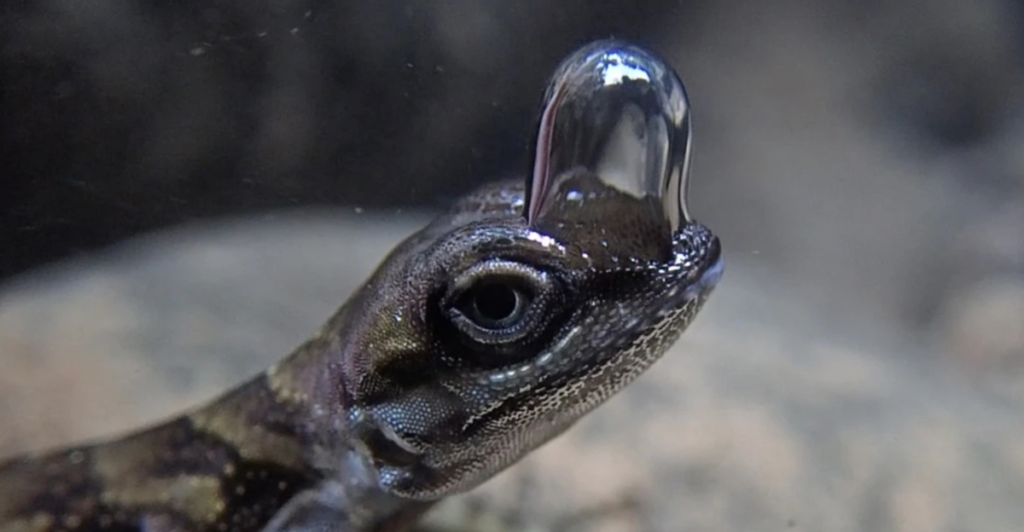
Nature is full of marvels that challenge our understanding of biology, and one of the most intriguing creatures on Earth is the Water Anole. Native to Southern Costa Rica, this remarkable reptile has a unique trick: it can breathe underwater by creating its air supply. This behavior is rare and an incredible adaptation to its environment, allowing it to thrive in watery habitats.
What Is The Water Anole?
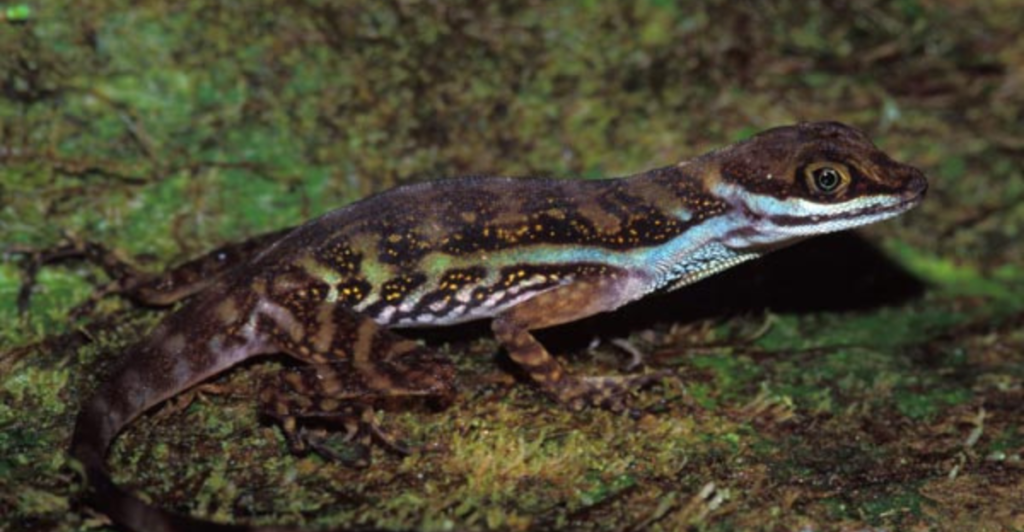
This little guy is a small, semi-aquatic lizard found in the rainforests of Costa Rica and Panama. Unlike most anoles, this remarkable reptile has adapted to an amphibious lifestyle, often diving into streams to evade predators. Its fascinating survival strategy allows it to thrive in its fast-flowing river habitats.
Their Self-Made Air Supply
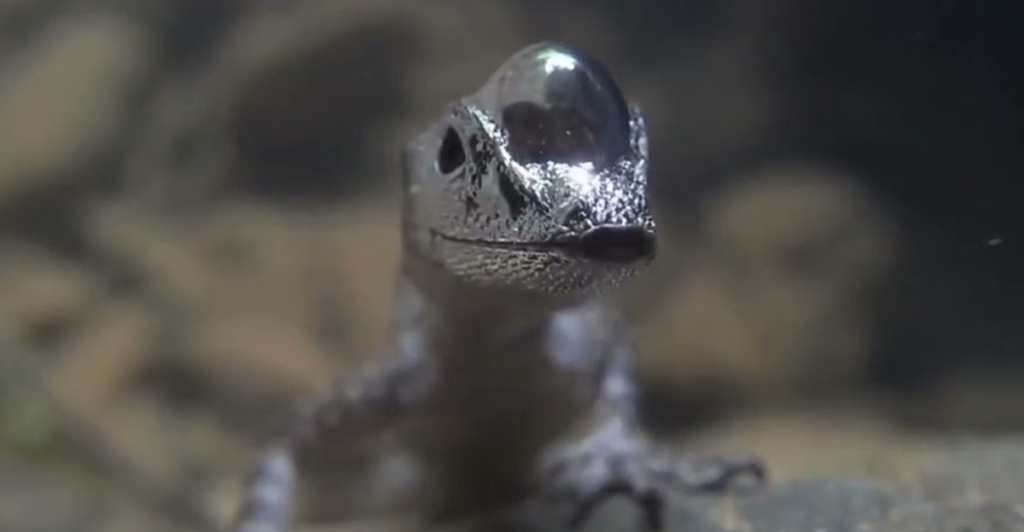
What makes the water anole unique is its ability to breathe underwater using a self-made air bubble that clings to its snout—an adaptation known as “rebreathing.” This tiny lizard can stay underwater, outlasting many aquatic creatures by trapping exhaled air and reusing it while submerged.
How Does The Air Bubble Work?
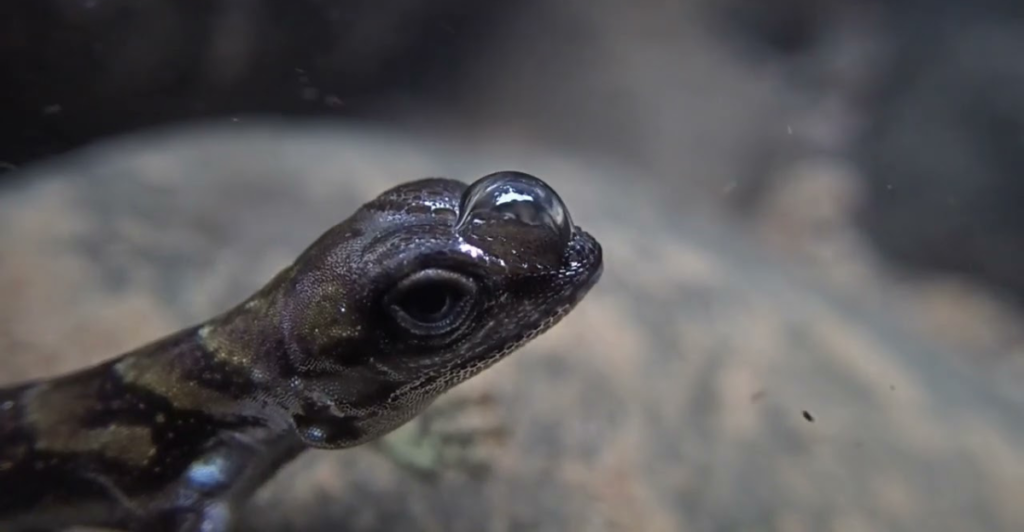
The water anole traps air between its skin and scales as it dives. This creates a small pocket of air that acts like a personal reservoir of oxygen. This bubble stays in place, allowing the anole to breathe while underwater. The lizard’s skin’s hydrophobic (water-repellent) properties may help maintain the bubble’s structure, preventing it from dissipating too quickly.
The Role Of Their Skin And Scales
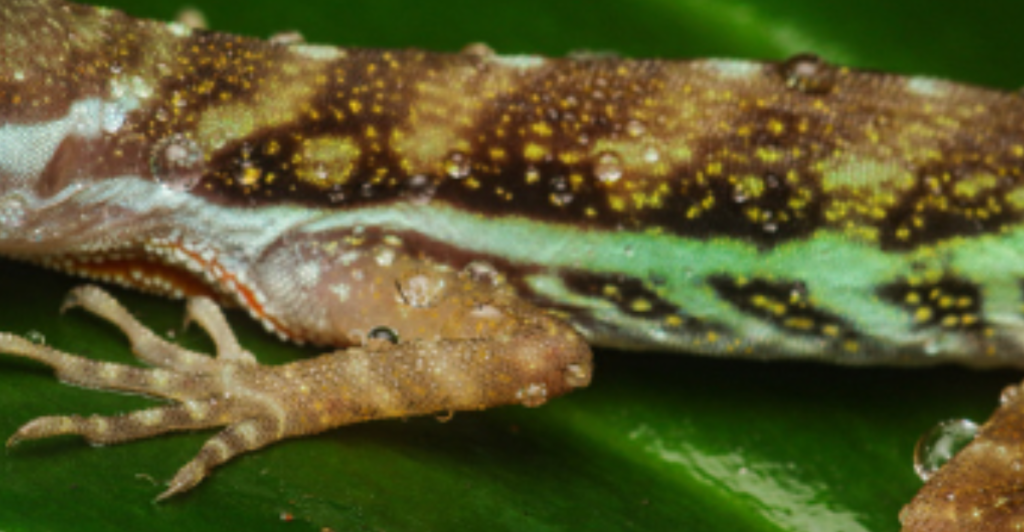
Their ability to breathe underwater wouldn’t be possible without their specialized skin and scales. Their skin is covered in microscopic, water-repellent structures that help trap a thin layer of air against their body, creating the perfect surface for forming and maintaining their rebreathing bubble. This hydrophobic adaptation prevents water from fully saturating the lizard’s skin, ensuring the air bubble remains intact for extended dives.
The Stealthy Predator
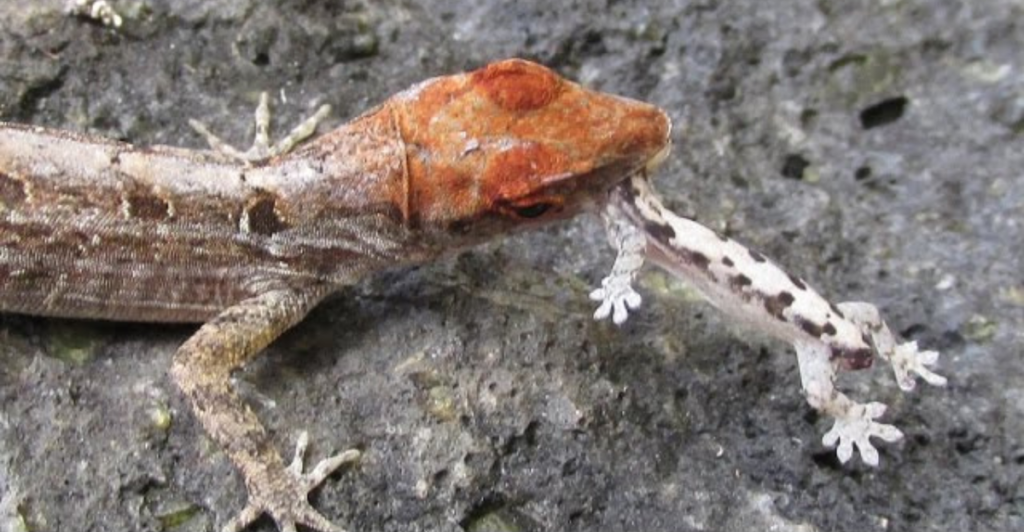
Despite its small size, the water anole is a stealthy predator that uses its aquatic adaptations to its advantage. Hunting relies on speed and patience, and the anole often lurks near the edges of streams where insects and small invertebrates gather. If threatened or in pursuit of prey, the anole can seamlessly dive into the water, using its air bubble to extend its time below the surface. This ability allows it to avoid detection while waiting for the perfect moment to strike.
The Water Anoles Habitat
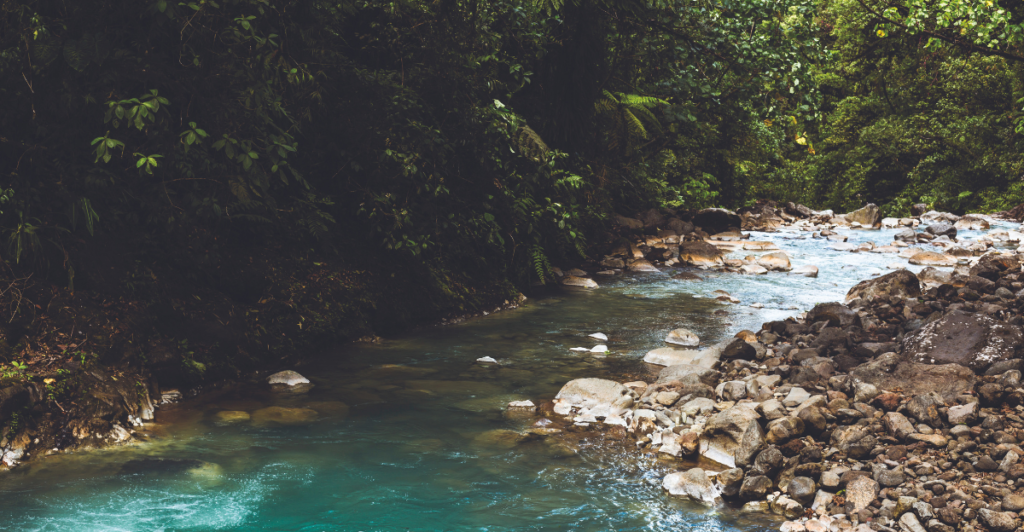
The water anole thrives in the lush, tropical rainforests where fast-flowing streams and rocky riverbanks provide the perfect environment for its amphibious lifestyle. These lizards are typically found clinging to moss-covered rocks, low-hanging branches, or hidden among the dense vegetation near water sources. Their habitat is a refuge from predators and a hunting ground, rich with insects and small invertebrates. The constant presence of water is crucial for their survival, as it allows them to use their unique underwater breathing adaptation whenever danger arises.
Their Adaption To Aquatic Life
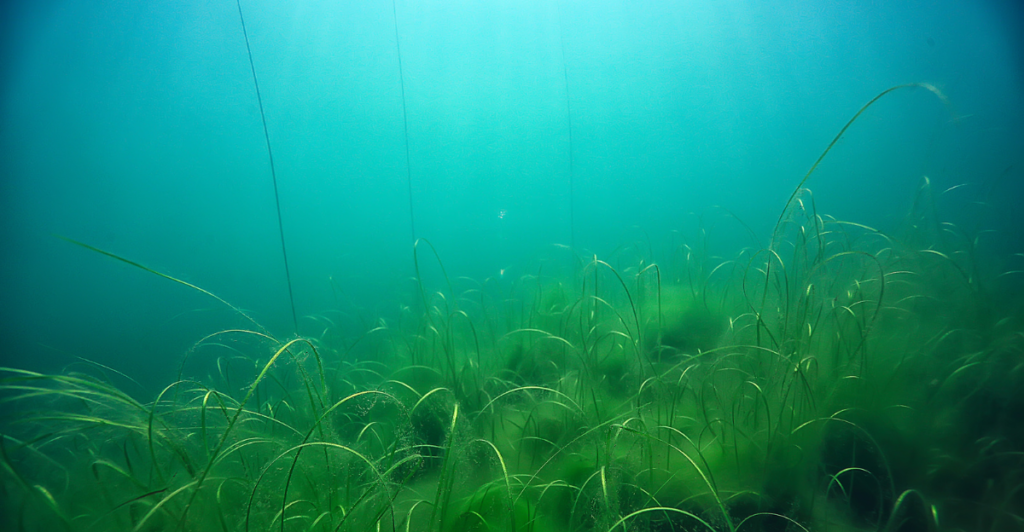
Unlike its tree-dwelling relatives, this lizard has developed unique traits that allow it to thrive in fast-flowing streams. Its hydrophobic skin helps trap an air bubble for underwater breathing, while its strong limbs and sharp claws enable it to cling to slippery rocks against the current.
Does Going Under Water Open Then Up To Other Predators?
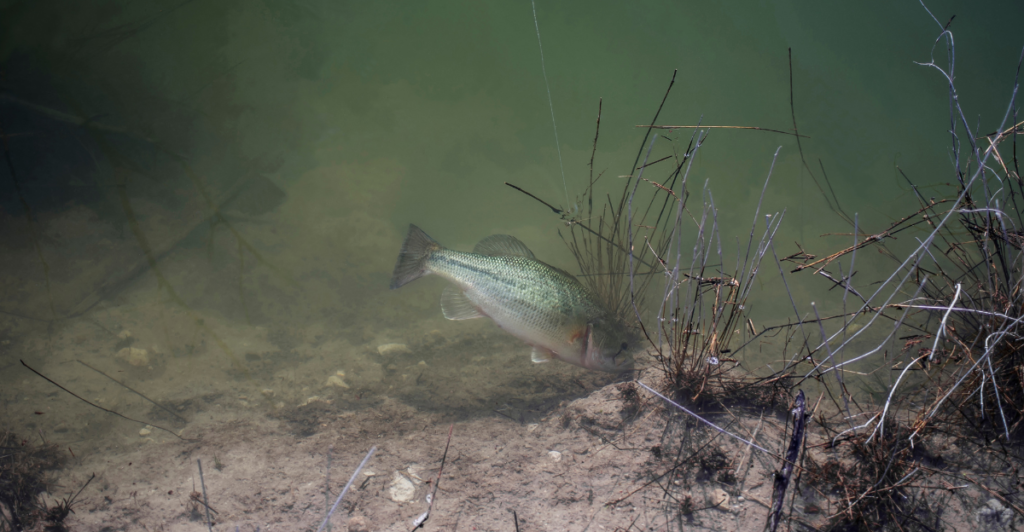
While diving underwater helps the water anole evade land-based predators like birds and larger reptiles, it comes with risks. Streams and rivers are home to various aquatic hunters, including fish, amphibians, and even water-dwelling invertebrates that might see the small lizard as a potential meal. However, the water anole’s ability to stay submerged for extended periods gives it an advantage—it can remain hidden among rocks and underwater vegetation, minimizing its chances of being detected. Its quick, agile swimming skills help it escape if a predator gets too close.
How Long Can They Stay Under Water?
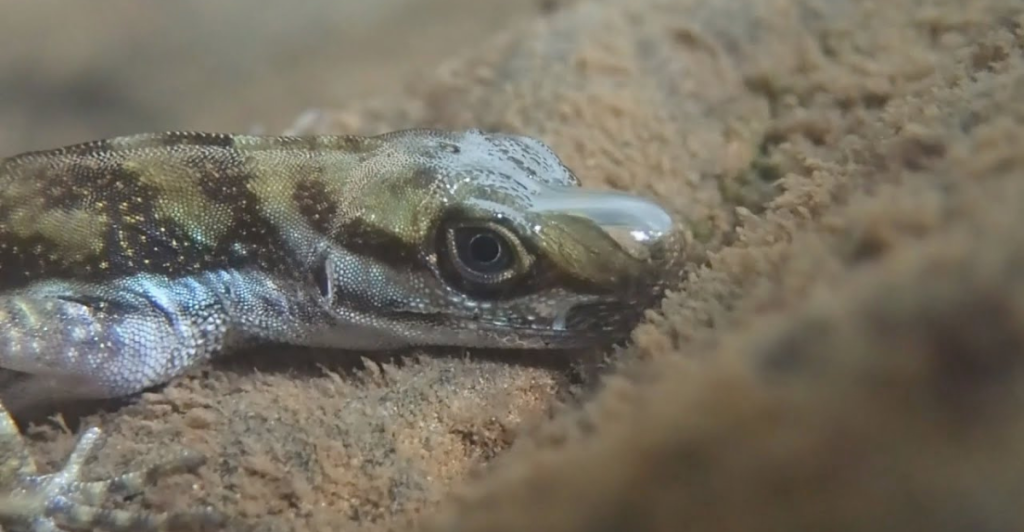
They can stay submerged for 16 minutes longer than most land-dwelling lizards could manage. This extended breath-holding time gives it a crucial advantage when evading predators or waiting for danger to pass.
The Importance Of Studying These Creatures

Understanding how this lizard reuses oxygen could inspire advancements in fields like biomimicry, potentially influencing new designs for underwater breathing technology. Researching these creatures also sheds light on the delicate ecosystems they inhabit, emphasizing the importance of preserving freshwater habitats in tropical rainforests. As climate change and deforestation threaten biodiversity, studying species like the water anole helps scientists track environmental changes and protect the unique adaptations that make nature resilient.
What Makes The Water Anole Unique?
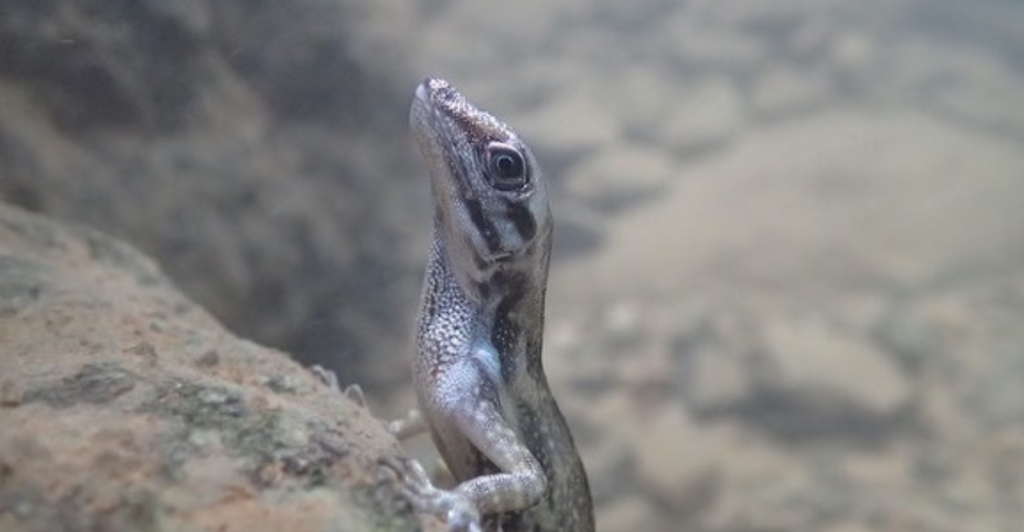
While some lizards are capable swimmers, none other has evolved the specialized adaptation of rebreathing underwater. Most reptiles rely on their lungs to breathe air, and once submerged, they quickly have to surface for oxygen. This extraordinary adaptation sets the water anole apart from its land-dwelling relatives.
A Master In Both Worlds
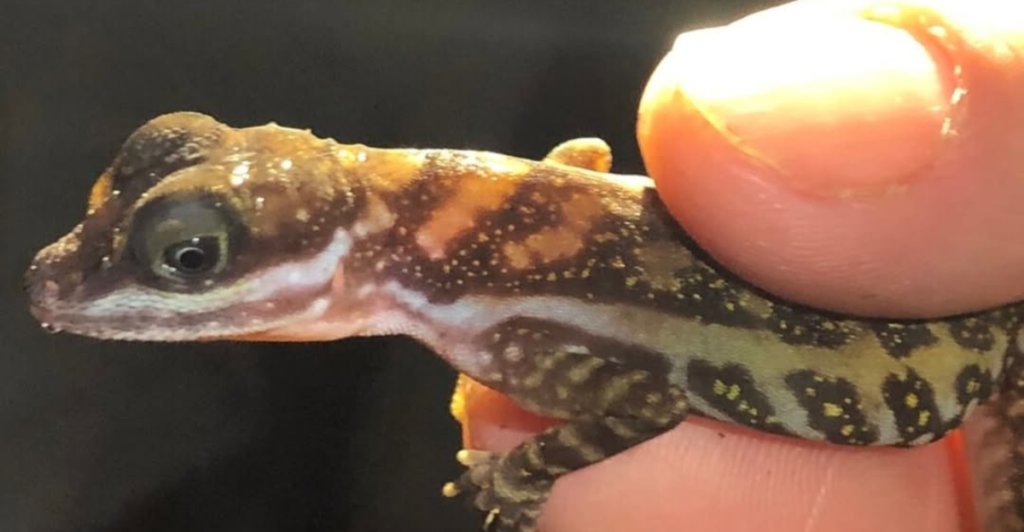
On land, it moves with agility, quickly climbing trees and rocks like other anoles. But when danger strikes, it seamlessly transitions to an aquatic escape, diving into the water and using its self-made air bubble to breathe while staying hidden for minutes. This dual capability gives the water anole a survival edge, allowing it to outmaneuver predators that might expect a typical lizard to flee on land.
Discover more of our trending stories and follow us to keep them appearing in your feed

12 Creatures from the Deep Sea You Wish Weren’t Real
12 Fish That Could Turn Your Dive Into a Life-or-Death Moment
The War on Cows Is Over—And Green Extremists Have Lost
Massive Solar Plant Is Shutting Down Early—Saving Californians Over $500M
References:
Reference 1
Reference 2
This article first appeared here
Stay connected with us for more stories like this! Follow us to get the latest updates or hit the Follow button at the top of this article, and let us know what you think by leaving your feedback below. We’d love to hear from you!







